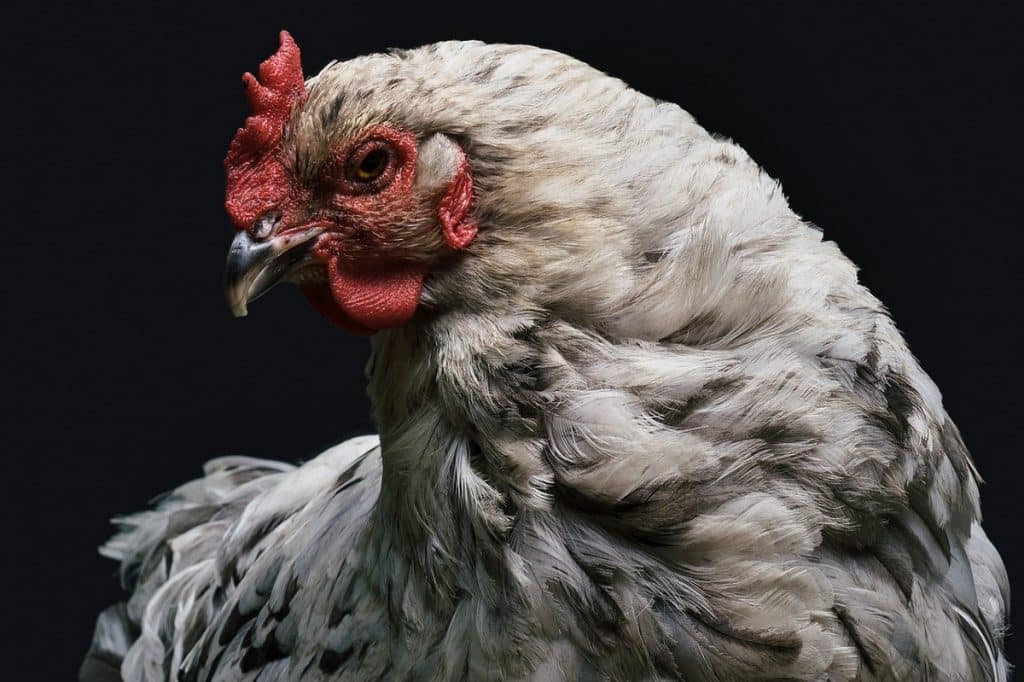I have a client who wanted to learn more about bitcoin and blockchain. Like many of my clients, they worked for an employer who is curious about this “Bitcoin thing” and not be left in the dust of paradigm shifts in technology.
Blockchain had become a running conversation between me and my client. I offered explanations, websites, blogs, videos, infographics… but, to my frustration (and assuredly my clients’) the question kept popping up.
“What backs it?”
I went out on a limb and tried to get as far away as possible from technical jargon, systems, history, or economic trends.
After this story, I saw the light bulb come on. Something clicked.
So here it is…

Chickens for Gasoline
Imagine…
…that there are 100 gas stations in a small town.
Each little station competes with the other. The prices go up and down because the cost of petroleum goes up and because of competition among stations.
Then we hit a period of prices going up, and up, with only minor dips.
The town’s perspective is now, “prices on gas are going up!”
So one of the gas stations wants to respond to the problem, and stand out to bring in more customers.
Because this is a small town, he notices a trend. Lots of people own chickens. But he doesn’t own chickens.
He looks at how much money his family spends on eggs and poultry every month. He realizes that having lots of eggs and chicken for dinner would save him quite a bit of money.
So, he puts up a billboard that says:
Half-price tank of gas for 1 chicken!
His gas station gets traffic, and a small farm of chickens to save him a good deal of money in the long run.
Other gas stations pick up on this. There’s all kinds of chicken deals all over town.
The cost of petroleum climbs. Nobody’s got the money, but people got chickens.
Nobody really needs chickens anymore, but people like trading chickens because, hey, if the cost goes up or the dollar inflates, they’ve got food on the table.
Chickens become currency in the town for gasoline.
Then people start digging into the advantages and disadvantages of trading chickens. Sometimes they get sick, sometimes they don’t produce, sometimes they run off or die.
They start tracking the average value of chickens compared to a gallon of gasoline.
A chicken stock market evolves.
It’s kept on a big chalk board in the middle of town.
People trade money for shares of chickens.
People track the value of gasoline and trade that for shares of chickens.
People track the value of rice (goes well with chicken) and trade that for shares of chickens.
All these things are traded back and forth. Money, rice, gasoline, and chickens based on the value.
Now here’s the clencher.
Over time, the chicken thing miraculously works out. Trust in the dollar is down. The towns people aren’t carrying cash around. Too many places take things like eggs and chicken shares.
The gas stations realize the cost of accounting and doing business in dollars isn’t profitable.
When out-of-towners show up…
Gas station attendant: “We don’t take credit cards or cash, only chickens.”
Out-of-towner: “Are you kidding me? This is REAL money!”
Gas station attendant: “Really? What’s backing it?”
Out-of-towner: “The government!”
Gas station attendant: “Sorry, it’s not valuable to me. I can’t do anything with it. And I’m not set up to take it. Go down to the chicken stock market, and maybe you can trade it for some chickens.”
To conclude, I’ll leave you with this question:
“If governments “back” the value of a currency, then why, historically, do fiat (government-mandate) currencies always become worthless over time?”




No Comments